Pour Over vs Coffee Pods – Expert’s Guide To Which Brewer Makes the Best Cup
When it comes to brewing coffee, the pour-over and coffee capsule methods can’t be more different. Pour over is a very ritualistic way to make coffee while coffee pod machines boast convenience – you just pop in a capsule and press a button.
This makes you wonder though, which method makes better coffee, and how do they compare?
I have used both methods for years, and now I will pit both brewers against each other. In this article, I’ll share with you an in-depth analysis of these methods based on key factors such as flavor, strength, affordability, and more so you can decide which method suits your taste and lifestyle best.
Comparing Pour Over & Coffee Pods

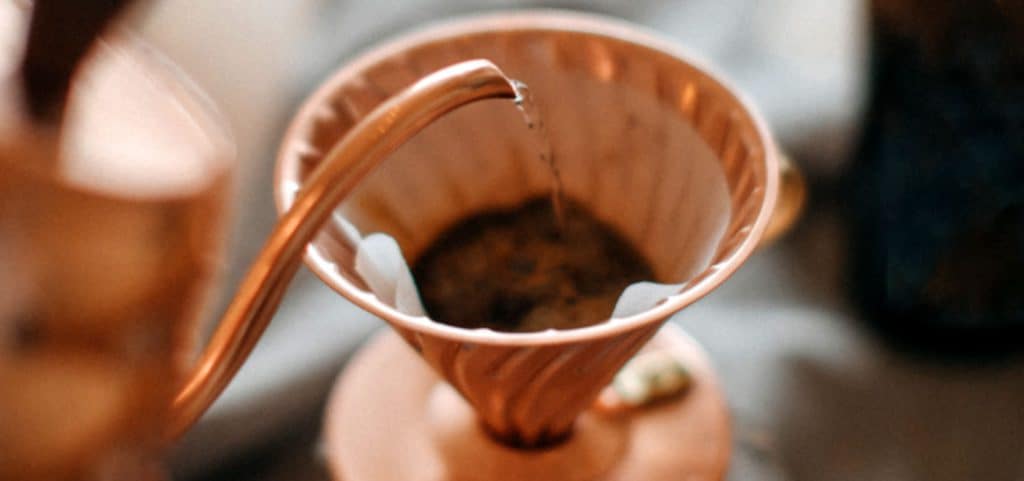
Pour Over coffee is a method of brewing that involves pouring hot water over ground coffee beans in a slow, steady manner. This ensures that all the grounds are evenly saturated and allows ample time for the water to extract maximum flavor from the coffee. Popular pour-over options include the Chemex, Hario V60, and Kalita Wave.
Meanwhile, coffee pod machines extract coffee from pre-packaged, single-serving pods or capsules. These machines puncture the pod before pushing hot water through it so you can get your caffeine fix. Nespresso and Keurig K-Cups are the two most popular options for this method of making coffee, but there are other smaller players on the coffee capsule market as well.
Here are the factors to consider when picking between the two brewing methods, followed by a detailed comparison of each feature:
| Features | Pour Over | Coffee Pods |
|---|---|---|
| Taste & Flavor | Clean and complex flavors, lighter-bodied cup | Strong and balanced intensity, delicious undertones |
| Strength | Flexible with coffee-to-water ratio and roast levels | Range of intensities from mild to extra-strong |
| Ease of Use | Slight learning curve, requires pouring technique | Fully automated, press a button to brew |
| Brewing Speed | 5 to 7 minutes | Approximately 1 minute |
| Versatility | High control over brewing process, adjust various factors | Limited control, primarily choose pod and volume |
| Durability & Portability | Varies depending on the brewer, some options are portable | Commonly made with steel and plastic, less portable |
| Sustainability | Occasional waste through paper filters, recyclable models available | Generates significant waste, limited recycling options |
| Cost | Low initial investment, recurring cost for filters | Higher initial investment, expensive individual pods |
Taste, Flavor, & Strength
To start this showdown, let’s compare the resulting cups of these coffee makers. Pour over coffee has clean and complex flavors with an intense aroma that excites your senses in every sip. This brewing method tends to produce a lighter-bodied cup that’s quite flexible if you alter the coffee-to-water ratio or use different roast levels. It can really bring out the original taste of your coffee beans.
On the other hand, coffee pods provide a strong and balanced intensity with delicious undertones of flavor. With pods ranging from mild to extra-strong intensities, there’s something for everyone. Nespresso capsules can be used to make real espresso, while Keurig can be used for espresso and longer cups of coffee as well.
Personally, I enjoy pour over coffee better because there are subtle nuances in each cup that I really like, plus I can tweak it to achieve the taste profile that really suits my palate.
Ease of Use
Now let’s find out which of these two methods is easier to use. Brewing with the pour over is not that difficult but it has a slight learning curve. It requires medium to medium-fine ground coffee with water at 195°F to 205°F, but what makes this method a bit trickier is the pouring timing and technique you need to pull off with a gooseneck kettle.

As for coffee pods, this method is far easier to use compared to pour over, since it’s fully automated. With pre-ground coffee already inside the capsules, everything else is taken care of by the machine. You just pick a pod, put it into the machine, and press a button to brew. It even creates its own filter as you can see on a used capsule.
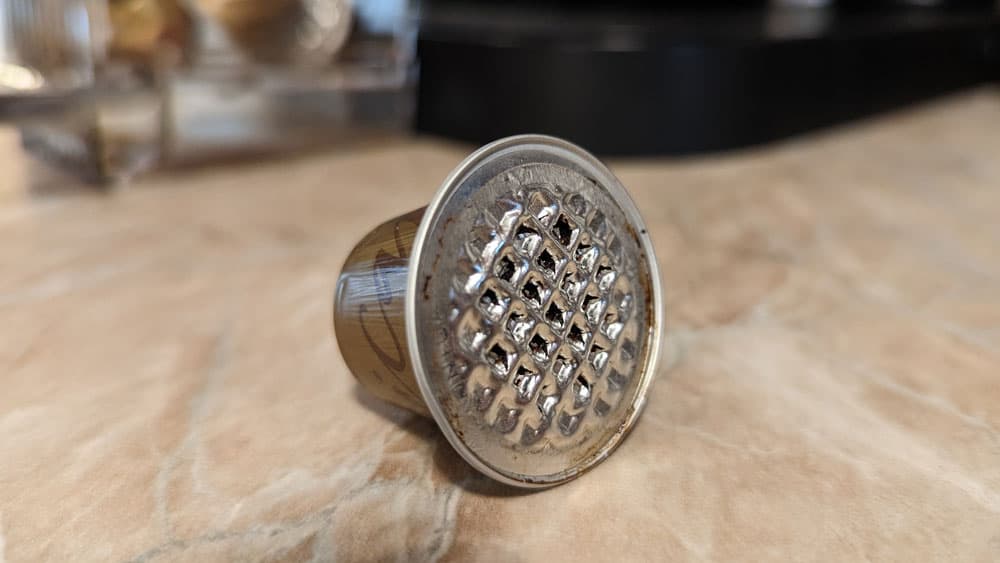
Brewing Speed
If the speed of making coffee is important to you, coffee pods take the lead in this race as well.
Coffee pods are renowned for their lightning-fast brewing speed, taking only about one minute from start to finish, cleaning up included. To tidy up, you just have to discard the pods and wipe down the machine from time to time. Note though that you also need to descale your machine occasionally to keep it in tip-top shape.
In contrast, pour over method takes longer to make coffee, around 5 to 7 minutes in total, from grinding the beans to brewing and cleaning up. If you’re using V60 drippers, cleaning only requires a quick rinse and throwing away the used filter. As for the Chemex, you need to be more careful since it has a fragile glass body.
There’s no doubt that coffee pods really ace it in the convenience department, as it requires no effort from you as you brew. But there is always a catch, which I’ll get to soon.
Versatility
A brewing method’s versatility is an important aspect for coffee brewers as everyone has their own preference when it comes to the taste, strength, and amount of coffee they need.
With pour overs, there’s a high degree of control over virtually every step in the entire brewing process. You can adjust water temperature, flow rate, coffee-to-water ratio, grind size – anything down to the smallest detail that could affect your cup of joe.
Pour Over also offers flexibility in terms of volume as these brewers come in different sizes. For example, the V60 comes in three sizes going up to 6 cups while the classic Chemex has four sizes that can really cater to various needs:
- 3-cup (16 oz)
- 6-cup (30 oz)
- 8-cup (40 oz)
- 10-cup (50 oz)
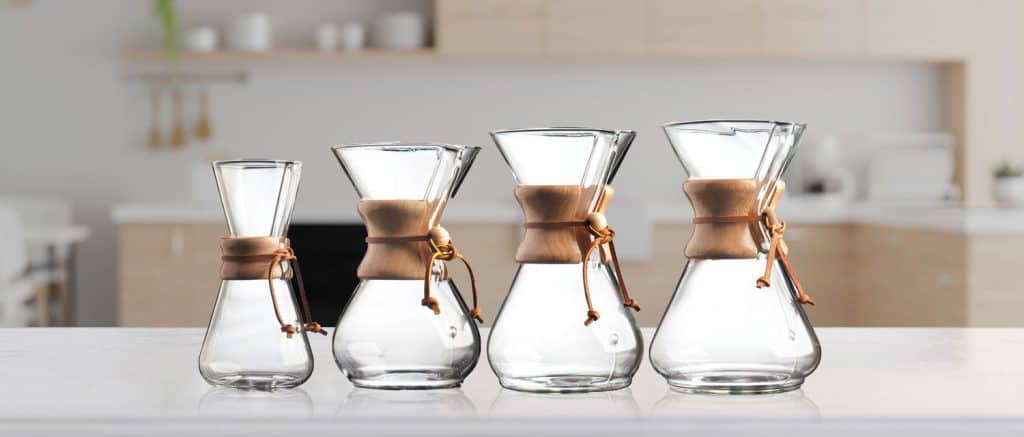
Meanwhile, coffee pod machines offer limited control over the brewing process. Aside from picking the pods yourself, it only provides flexibility in terms of volume, usually ranging from 25 ml, 40 ml, and 110 ml drinks for Nespresso, and larger volume ones for Keurig.
So if the versatility of each brewer is put to the test, there’s no doubt that pour over wins over the coffee pods. This is also why I like using my Chemex and V60 – these devices allow me to craft coffee that really captures my cravings.
Durability and Portability
Aside from the strength of our coffee, we should also look into the strength of our brewing device.
In terms of durability, pour overs vary depending on the brewer you’re using. While Chemex is made with glass, drippers like the V60 also come in durable materials including metal, copper, and plastic. The drippers’ compact size also makes it a portable option.
On the contrary, coffee pod machines are commonly made with steel and plastic parts. With proper care, branded machines can last long. Take note that while they can be compact, coffee pod machines are designed to stay in your kitchen countertop, plugged into an electric outlet when you need it, so this brewer isn’t as portable.
Sustainability
Coffee production’s sustainability is important because it ensures that the environment and resources are preserved for future generations.
Pour overs are some of the most eco-friendly coffee brewers you can get. While they skip the need for electricity, they do produce occasional waste through paper filters. These filters are often compostable and come with reusable alternatives. Furthermore, while these brewers come in recyclable models such as glass and steel, there are also plastic variants that can be a concern for the eco-conscious.
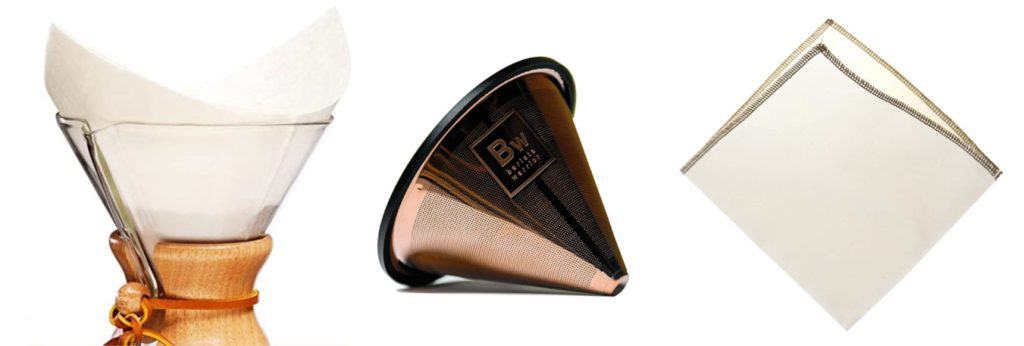
Now let’s talk about coffee pods, which I am strongly against and do not recommend if you don’t want to contribute to the massive amounts of waste they generate.
While there are efforts to make it more sustainable, most people don’t recycle the pods as not many pod recycling programs exist right now. And even though you can get capsule refill systems, they compromise the machine’s main selling point: convenience.
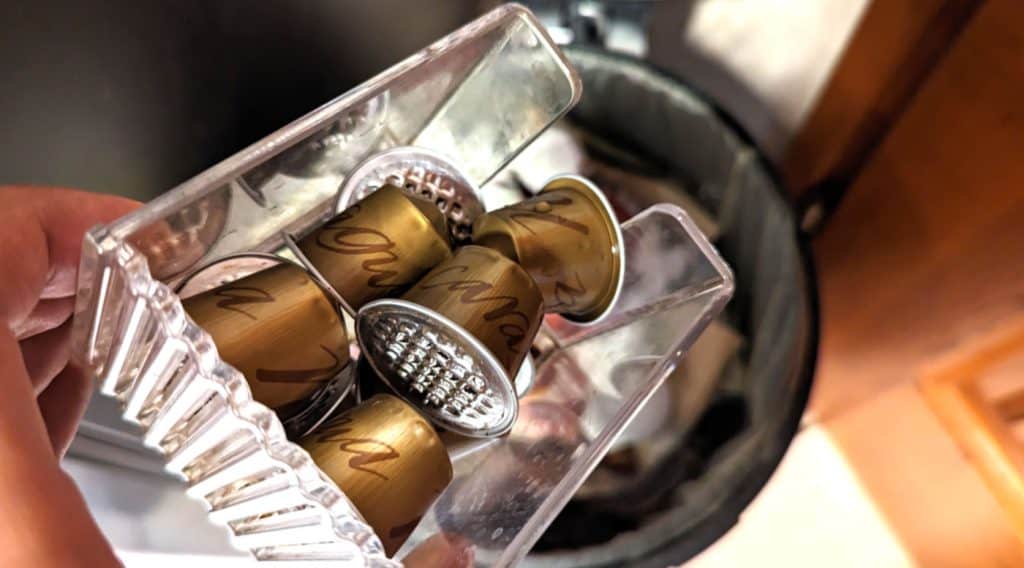
So if you are wary about the harm that the coffee industry can inflict on our environment, it’s pretty clear that you should go for pour over instead of the wasteful coffee pods. Click here for more tips to make your coffee-making more eco-friendly.
Cost
One of the biggest differences between the pour over and coffee pods is the price range. Let’s break it down.
Pour overs have a low initial investment ranging from $5 to $50 depending on the brewer of your choice. There is a recurring cost for paper filters, but this will only set you back at 2 to 8 cents per filter in 2024.
As for its automated competitor, you’ll have to shell out a higher initial investment ranging from roughly $150 to $600 just for a coffee pod machine. Additionally, individual pods are expensive as well, making them less cost-efficient than other methods since you have to continually purchase them unit-by-unit. The cheapest 3rd party pods (that are really bad) cost $0.25, while the brand name ones start at $0.80.
So if you are on a tight budget, you really want to go for pour over brewers instead of pod machines. It might have additional costs for filters, but it’s not as expensive as maintaining a Nespresso or Keurig machine.
Pour Over and Coffee Pods – Weighing the Pros & Cons
Now that we’ve gotten a closer look at the features of each brewing method, here’s a quick overview of the pros and cons of pour over and coffee pods so you can finally decide which one is for you:
| Brewing Method | Pros | Cons |
|---|---|---|
| Pour Over | – Offers great control over the brewing method – Easy to produce consistent coffee – Fairly affordable | – Requires a bit of patience to brew – Glass brewers can be fragile – Needs extra equipment such as a scale and kettle |
| Coffee Pods | – Automation allows for quick and convenient brewing – Different kinds of pre-packaged capsules for consistent results | – Requires electricity – Pricey plus the pods become recurring expenses – Limited control over the brewing process |
You can also read my comparisons between pour over and other brewing methods:
Meanwhile, here’s how coffee pod machines compare to other brewers:
Conclusion
as you can see, there are numerous differences between the two brewing methods, but it’s ultimately up to you to make the pick based on your taste and lifestyle. If you like to versatile and sustainable way of brewing without breaking the bank, go for pour over; but if convenience is paramount when you’re making coffee, even though you are basically destroying our environment in the process (guilt trip), get a coffee capsule machine.
As you can guess, I’ll take pour-over any day. I don’t mind the extra time and effort to make my own coffee. I enjoy the brewing process and experimenting with coffee recipes and various beans. But maybe I’m just too big of a coffee nerd.
How about you, which brewing method do you prefer? Let me know in the comments below.








